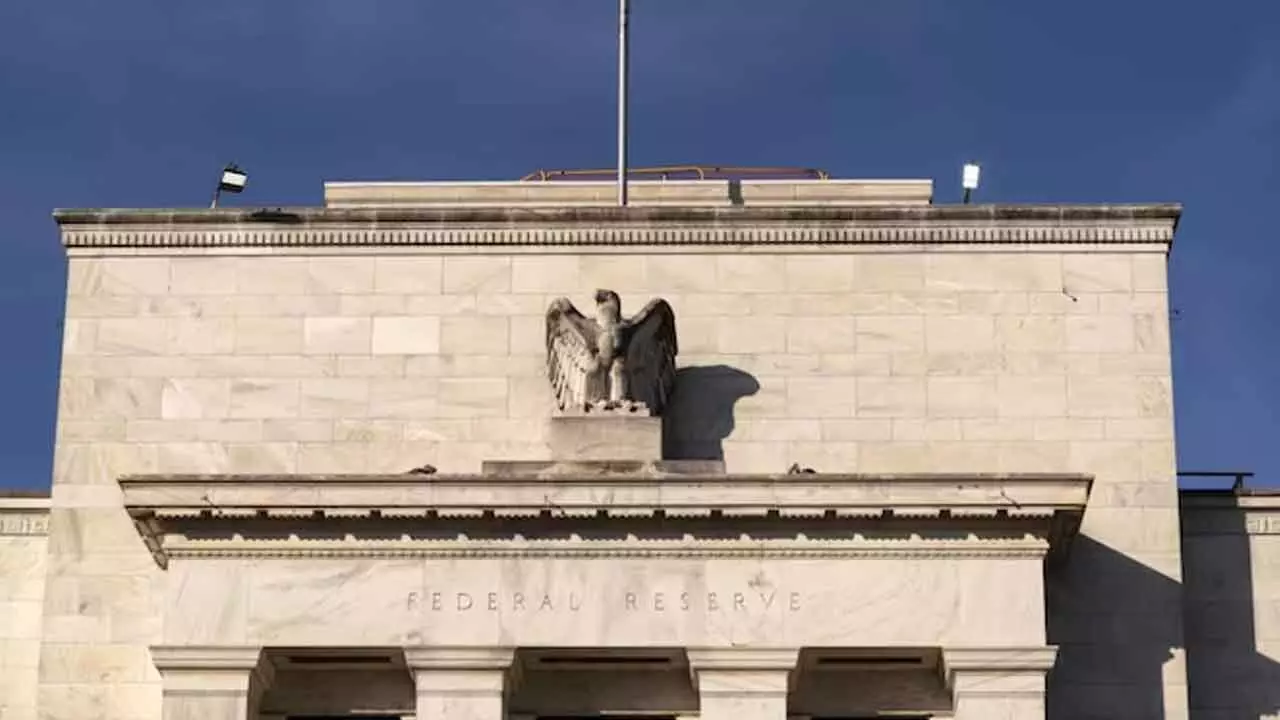Fed Holds Rates Steady, Signals Future Cuts Despite Looming Tariff-Driven Inflation
The US Federal Reserve held interest rates steady but signaled two cuts by year-end 2025, even as Chairman Jerome Powell anticipates "meaningful" inflation from new tariffs. Discover the Fed's cautious economic outlook and the potential for stagflation
Fed Holds Rates Steady, Signals Future Cuts Despite Looming Tariff-Driven Inflation

The U.S. Federal Reserve decided on Wednesday to maintain its benchmark interest rate, but offered a glimpse into its future intentions by penciling in two rate cuts by the end of 2025. This cautious approach comes as Fed Chair Jerome Powell warned of "meaningful" inflation on the horizon, largely attributable to the Trump administration's anticipated import tariffs.
While policymakers' updated projections hint at falling borrowing costs, Powell underscored the data-dependent nature of these forecasts. He acknowledged that the outlook remains challenging, with expectations of slower economic growth, a rise in unemployment, and faster price increases ahead.
"No one holds these... rate paths with a great deal of conviction, and everyone would agree that they're all going to be data-dependent," Powell stated during a press conference following the two-day Federal Open Market Committee (FOMC) meeting. He even suggested that without the shadow of tariffs, rate cuts might be more readily on the table, given recent favorable inflation readings.
However, a "cost shock is coming," Powell insisted. He highlighted the ongoing struggle among producers, manufacturers, and retailers to absorb existing levies, with President Donald Trump contemplating even more aggressive import duties slated to take effect as early as next month.
"Everyone that I know is forecasting a meaningful increase in inflation in coming months from tariffs, because someone has to pay for the tariffs... between the manufacturer, the exporter, the importer, the retailer," Powell explained. "People will be trying not to be the ones who can pick up the cost. Ultimately, the cost of the tariff has to be paid, and some of it will fall on the end consumer."
The Fed chairman emphasized the need for patience, stating, "We'll make smarter and better decisions if we just wait a couple of months or however long it takes to get a sense of really what is going to be the pass-through of inflation" from the higher import taxes.
The new economic projections unveiled by the Fed paint a somewhat "stagflationary" picture – a concerning combination of sluggish growth and rising inflation. Growth for 2025 is now expected to slow to 1.4% (down from 1.7% in March's projections), unemployment is projected to rise to 4.5% (up from 4.4%), and inflation is anticipated to end the year at 3%, a noticeable increase from current levels.
While the forecast for a half-percentage-point cut in rates this year remains consistent with March and December projections, the Fed has tempered its longer-term outlook. Only a single quarter-percentage-point cut is now expected in both 2026 and 2027, signaling a more drawn-out battle to bring inflation back to the central bank's 2% target.
The FOMC's decision wasn't entirely unanimous, with seven of the 19 policymakers indicating that no rate cuts would be necessary. This divergence of views, Powell noted, reflects the persistent "foggy time" due to the uncertainty surrounding Trump's tariff policy, and differing assessments of whether inflation could remain stubbornly high or if the labor market might weaken.
Under these revised projections, inflation is set to remain elevated at 2.4% through 2026 before finally easing to 2.1% in 2027, with the unemployment rate largely stable. Despite the challenging outlook, the Fed's policy statement affirmed that "the unemployment rate remains low, and labor market conditions remain solid," and the decision to keep the benchmark overnight interest rate in the 4.25%-4.50% range was approved unanimously.
Jack McIntyre, portfolio manager for global fixed income at Brandywine Global, summarized the sentiment, stating, "There's still bias towards some version of stagnation, lower growth with rising sticky inflation. It feels like it's a Fed that's still being very patient, and they're still biased towards cutting rates in the near future."
Interestingly, the Fed's statement notably omitted any mention of the recent flare-up of hostilities between Israel and Iran and its potential impact on global oil or other markets. Powell addressed this directly in his press conference, acknowledging that the Fed is monitoring the conflict but suggested that any energy price spikes typically fade without lasting inflationary effects.
"For the time being, we are well positioned to wait to learn more about the likely course of the economy before considering any adjustments to our policy stance," Powell reiterated, emphasizing the Fed's readiness to "react" to incoming data in a timely manner.
Markets remained largely muted in response, with U.S. stock indexes closing flat and the 10-year Treasury yield virtually unchanged. Interest rate futures continue to point to the Fed's September 16-17 meeting as the most probable time for the next rate cut, with another reduction likely by year-end.
The Fed's decision to hold rates firm stands in direct contrast to President Trump's repeated calls for immediate, drastic rate cuts – a stance Fed officials believe would undermine their inflation-fighting efforts, particularly before the full implications of new tariffs are understood. While the Fed had cut rates three times in the previous year, the most recent in December, policymakers remain hesitant to commit to a firm timeline for further cuts given the unpredictable nature of U.S. trade policy and the complex ripple effect of import taxes on consumers, importers, and producing nations.

